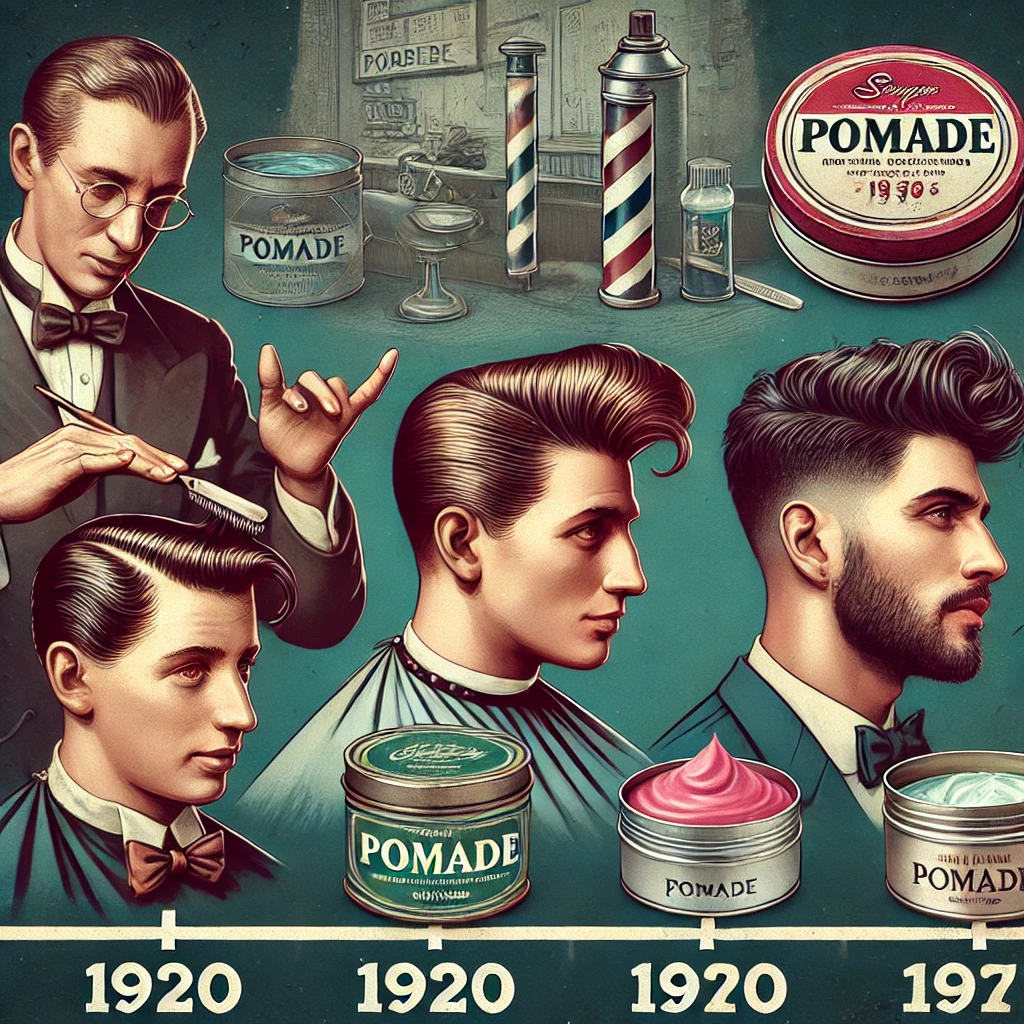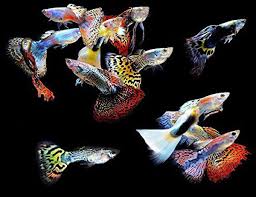The Origins of Hair Pomade – A Journey Through the Early Decades
The Birth of Hair Pomade
Hair pomade, a styling product designed to add shine, hold, and texture to hair, has a rich history that dates back centuries. Its origins can be traced to ancient civilizations, where natural ingredients like animal fats and plant oils were used to style and maintain hair. However, the modern concept of hair pomade began to take shape in the 18th and 19th centuries. During this time, men and women sought ways to keep their hair neat and presentable, especially as societal norms placed a high value on appearance.
The early versions of pomade were often made from bear fat, lard, or beeswax, mixed with fragrances to mask the unpleasant odors of the base ingredients. These concoctions were thick, greasy, and challenging to wash out, but they provided the hold and shine that people desired. The term “pomade” itself is derived from the French word “pommade,” which refers to an ointment made from apples. This name was inspired by early recipes that used apple pulp as a key ingredient.
The Rise of Pomade in the 19th Century
As the 19th century progressed, hair pomade became more refined and widely available. The Industrial Revolution played a significant role in this transformation, as advancements in manufacturing allowed for the mass production of grooming products. Barbershops began to stock pomade, and it became a staple in men’s grooming routines.
During this era, pomade was primarily used by men to achieve sleek, polished hairstyles. The slicked-back look, often paired with a mustache or beard, was a symbol of sophistication and status. Women also used pomade, though their styling preferences leaned more toward intricate updos and curls. The popularity of pomade was further fueled by the rise of the middle class, as more people had the means to invest in personal grooming products.
The Cultural Significance of Early Pomade
Hair pomade was more than just a styling product; it was a reflection of societal values and cultural trends. In the 19th century, maintaining a well-groomed appearance was seen as a sign of respectability and self-discipline. Pomade allowed individuals to conform to these standards, whether they were attending a formal event or simply going about their daily lives.
The use of pomade also had a practical side. In an era when frequent hair washing was not common, pomade helped to keep hair in place and reduce frizz. It was particularly popular among men with thick, unruly hair, as it provided the necessary hold to create a polished look.
Challenges and Innovations in Early Pomade
Despite its popularity, early pomade had its drawbacks. The heavy, greasy formulas were difficult to wash out and often left hair feeling weighed down. Additionally, the use of animal fats and other natural ingredients made the product prone to spoilage. These challenges prompted manufacturers to experiment with new formulations and ingredients.
By the late 19th century, petroleum-based pomades began to emerge. These products were lighter and easier to apply, offering a more comfortable alternative to traditional pomades. The introduction of petroleum jelly as a base ingredient marked a significant turning point in the evolution of hair pomade, paving the way for the modern products we know today.
The Golden Age of Pomade – Mid-20th Century Trends
The Pomade Boom of the 1920s and 1930s
The 1920s and 1930s marked the beginning of the golden age of hair pomade. During this time, pomade became a cultural phenomenon, thanks in part to the rise of Hollywood and the influence of movie stars. Actors like Rudolph Valentino and Clark Gable popularized sleek, polished hairstyles, inspiring men around the world to adopt similar looks.
Pomade was also embraced by various subcultures, including jazz musicians and gangsters. These groups used pomade to create distinctive hairstyles that reflected their identities and lifestyles. For example, the slicked-back “gangster look” became synonymous with rebellion and defiance, while the smooth, shiny hair of jazz musicians added to their charismatic stage presence.
The Impact of World War II on Pomade Trends
World War II had a profound impact on the hair pomade industry. With resources diverted to the war effort, many grooming products became scarce. However, this scarcity only increased the demand for pomade, as soldiers and civilians alike sought to maintain their appearance during challenging times.
Military regulations required soldiers to keep their hair short and neat, and pomade became an essential tool for achieving this look. After the war, returning soldiers brought their grooming habits back home, further solidifying pomade’s place in mainstream culture.
The Rise of Rock ‘n’ Roll and Youth Culture
The 1950s saw the emergence of rock ‘n’ roll and youth culture, which had a significant influence on pomade trends. Icons like Elvis Presley and James Dean popularized rebellious, edgy hairstyles that required strong hold and high shine. Pomade became a symbol of youth and rebellion, as young people used it to create bold, attention-grabbing looks.
During this era, pomade formulas continued to evolve. Manufacturers began to introduce water-based pomades, which were easier to wash out and less greasy than their oil-based counterparts. These new products appealed to younger consumers, who valued convenience and versatility.
The Cultural Legacy of Mid-Century Pomade
The mid-20th century was a transformative period for hair pomade, as it became deeply intertwined with popular culture. From Hollywood stars to rock ‘n’ roll icons, pomade was a key element in defining the era’s most iconic hairstyles. Its versatility and adaptability made it a favorite among people from all walks of life, cementing its status as a timeless grooming product.
The Decline and Revival of Pomade – Late 20th Century Shifts
The Decline of Pomade in the 1960s and 1970s
The 1960s and 1970s brought significant changes to the hair care industry, and pomade was not immune to these shifts. The rise of the counterculture movement and the popularity of natural, free-flowing hairstyles led to a decline in the use of traditional pomade. Young people began to reject the polished, conformist looks of previous decades, opting instead for more relaxed and effortless styles.
At the same time, new hair care products like gels and mousses entered the market, offering alternatives to pomade. These products were lighter and easier to use, appealing to consumers who wanted a more modern approach to hair styling.
The Punk Rock Era and the Reinvention of Pomade
Despite its decline in mainstream culture, pomade found a new audience in the punk rock scene of the 1970s and 1980s. Punk musicians and fans used pomade to create bold, unconventional hairstyles that defied traditional norms. Spiked hair, mohawks, and other edgy looks became synonymous with the punk movement, and pomade was the key to achieving these styles.
This era also saw the emergence of DIY culture, as punk enthusiasts experimented with homemade pomade recipes. These DIY products often featured unconventional ingredients like petroleum jelly and food coloring, reflecting the rebellious spirit of the punk movement.
The Revival of Classic Pomade in the 1990s
The 1990s marked a revival of interest in classic pomade, thanks in part to the resurgence of vintage fashion and culture. Retro hairstyles from the 1950s and 1960s became popular again, and pomade was essential for recreating these looks. Brands like Murray’s and Dax, which had been around for decades, experienced a resurgence in popularity as consumers rediscovered the benefits of traditional pomade.
This revival was also fueled by the rise of barbershop culture, as men began to seek out classic grooming experiences. Barbershops became social hubs where men could connect and share tips on hair care, and pomade was a central part of this experience.
The Legacy of Late 20th Century Pomade
The late 20th century was a period of reinvention for hair pomade. While it faced challenges from new products and changing trends, pomade proved its resilience by adapting to the needs of different subcultures and generations. Its ability to evolve and remain relevant is a testament to its enduring appeal.
Modern Pomade – Innovation and Diversity in the 21st Century
The Rise of Modern Pomade Formulas
The 21st century has seen a surge in innovation within the hair pomade industry. Modern pomades are available in a wide range of formulas, from traditional oil-based products to water-based and hybrid options. These new formulations cater to diverse hair types and styling preferences, offering everything from strong hold and high shine to lightweight texture and matte finishes.
One of the most significant advancements in modern pomade is the use of natural and organic ingredients. As consumers become more conscious of the products they use, many brands have shifted away from synthetic chemicals and petroleum-based ingredients. Instead, they are incorporating plant-based oils, waxes, and butters to create healthier, more sustainable products.
The Influence of Social Media and Celebrity Culture
Social media and celebrity culture have played a major role in shaping modern pomade trends. Platforms like Instagram and YouTube have given rise to a new generation of grooming influencers, who share tips and tutorials on how to use pomade to achieve various hairstyles. These influencers have helped to popularize pomade among younger audiences, who are drawn to its versatility and ability to create trendy looks.
Celebrities have also contributed to the resurgence of pomade. Actors, musicians, and athletes often showcase sleek, polished hairstyles on red carpets and social media, inspiring fans to experiment with pomade. This celebrity endorsement has helped to elevate pomade from a niche product to a mainstream grooming essential.
The Diversity of Modern Pomade Styles
One of the defining features of modern pomade is its ability to cater to a wide range of hairstyles and preferences. Whether someone is looking to recreate a vintage slicked-back look or achieve a modern textured style, there is a pomade formula to suit their needs.
For example, matte pomades have become increasingly popular among those who prefer a natural, understated finish. These products provide hold and control without the shine, making them ideal for casual, everyday looks. On the other hand, high-shine pomades remain a favorite for formal occasions and classic styles.
The Future of Hair Pomade
As the hair care industry continues to evolve, pomade is likely to remain a staple in grooming routines. Its ability to adapt to changing trends and consumer preferences ensures its longevity. Looking ahead, we can expect to see even more innovation in pomade formulas, with a focus on sustainability, inclusivity, and customization.
In conclusion, the evolution of hair pomade is a fascinating journey that reflects broader cultural and societal changes. From its humble beginnings as a greasy, animal-fat-based product to its current status as a versatile and innovative styling tool, pomade has stood the test of time. Its rich history and enduring appeal make it a true icon in the world of hair care.










